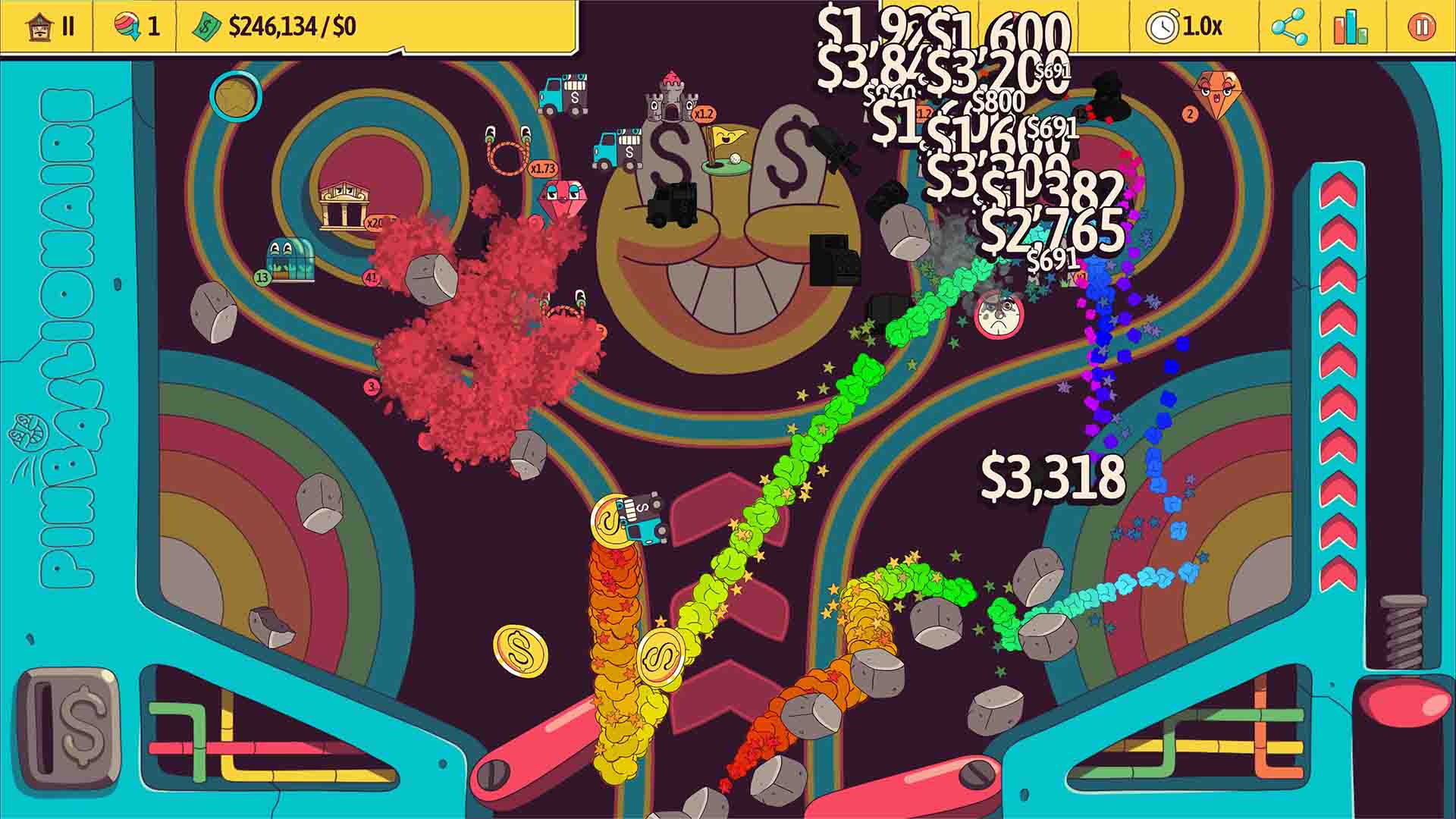Ballionaire review
Anyone who loves indie games will be more than familiar with the Roguelike genre by now, as it slowly takes over all of gaming. It’s a type of game I truly adore though, with all sorts of weird and wonderful games sporting permadeath, randomness, and different builds you can carefully construct to finally beat a run. 2024 has seen the rise of the Poker Roguelike thanks to Balatro, another fantastic appearance from Hades thanks to Hades 2, and even long running series like Prince of Persia and The Last of Us getting in on the action. A lovely surprise to end this year of Roguelikes though comes from Ballionaire, which brings Pachinko to the proceedings for extra randomness.
The aim of a run of Ballionaire is simple: you drop a set number of balls into a Pachinko machine full of pegs that score dollars, with a money goal that you need to reach to beat the round. You don’t get to control where the ball is placed, you just press a button to release it and see what happens thanks to physics. The only thing you can control are the additional pegs you can add into the machine, which have all sorts of effects.
The game does a good job of introducing you to these with various pre-set starting pegs, which demonstrate how to make a point scoring machine. The first of these is the most simple which adds extra bouncy pegs to propel the ball around more and save it from dropping alongside teleporters which send it back to the top for another go, which is a simple but effective way to score extra cash. It’s not as interesting as taking advantage of the elements, though.

Certain pegs will either spawn or transform your ball into a different type of ball when bonked (which is actually the official term) and these have different effects on other pegs. Hitting a cloud with a water ball enough times will make it storm and rain multiple water balls down from the top of the stage for huge scores, or you can use a campfire to drop flaming balls onto pegs that benefit from them. It’s a really clever system that enables you to set off some really intricate combos, but don’t expect those money goals to be reached easily even with this knowledge.
My absolute favourite way to rack up the points in Ballionaire though is with food, which can be collected by a ball and carried down the pegs. Grabbing multiple base food items like bread, cheese, tomato, and taking them to a pan will cook up a brand new pizza peg which scores dollars each time you hit it, and if you manage to land a ball full of food into a mouth peg it’ll eat the ball and grant huge cash bonuses for each bit of food it gobbles down. Once you set up the perfect pyramid of pegs to set off these combos it feels incredible, but it’ll take some luck to gather the pegs to pull it off.

After each ball you drop into the Pachinko machine you’re offered a new peg to add to it, from a selection of three. You have the option to reroll a few times, but sometimes you’ll just have to live with a peg that doesn’t really fit your build. You can make these work well enough sometimes by putting them in spots your ball rarely goes or just appreciating the money they give regardless, but as you fill up the board more and more you might need to replace some of them. You have the ability to destroy a limited number of pegs too though at least, but balancing out using these is another piece of the pegging puzzle.
There’s one other element of Ballionaire worth mentioning that’s pretty important, and that’s that for beating one of the nine score goals of a run you’re offered a permanent passive buff that can absolutely change the game. One of these will allow the first ball carrying food to fall off the table to restart from the top, another grants a big chunk of cash each time a new ball is spawned which reveals a new way to earn the big bucks, and there are dozens and dozens of others. These passives really help tie certain builds together, and are often the difference between winning and losing a run.
Although for the most part Ballionaire is played on a stationary table, it’s worth mentioning that this isn’t always the case. One particular table is actually fitted with pinball flippers that you can activate a few times to really get that cash flowing, which flips the game on its head completely. I didn’t really appreciate these more gimmicky tables as much as the more strategy focused stationary ones, but they’re fun in their own way.

Like many beloved Roguelikes Ballionaire also features some unlockables you can add to the game between runs, by using a vending machine after you’ve had a vaguely successful attempt. It’s always nice to add a new peg that you know will help you score big in future runs, but sometimes it can be a bit tricky to tell if that’ll be the case.
I really enjoyed my time with Ballionaire, but I do feel like it’s not particularly intuitive to figure out the best pegs to draft to score big. It took me dozens of attempts to finally score my first victory, and this was on the lowest difficulty that unlocked tons of new modes when beaten. The overall randomness of the bouncing balls will frustrate some too, as that extra level of luck being needed to win doesn’t always lead to success.
Ballionaire is a really interesting Roguelike that combines Pachinko and permadeath to create a fun and unique game. Not everyone will appreciate the luck you need to succeed, but building a brilliant board of pegs that leaves you rolling in cash feels amazing and makes all those losses feel worth it.




